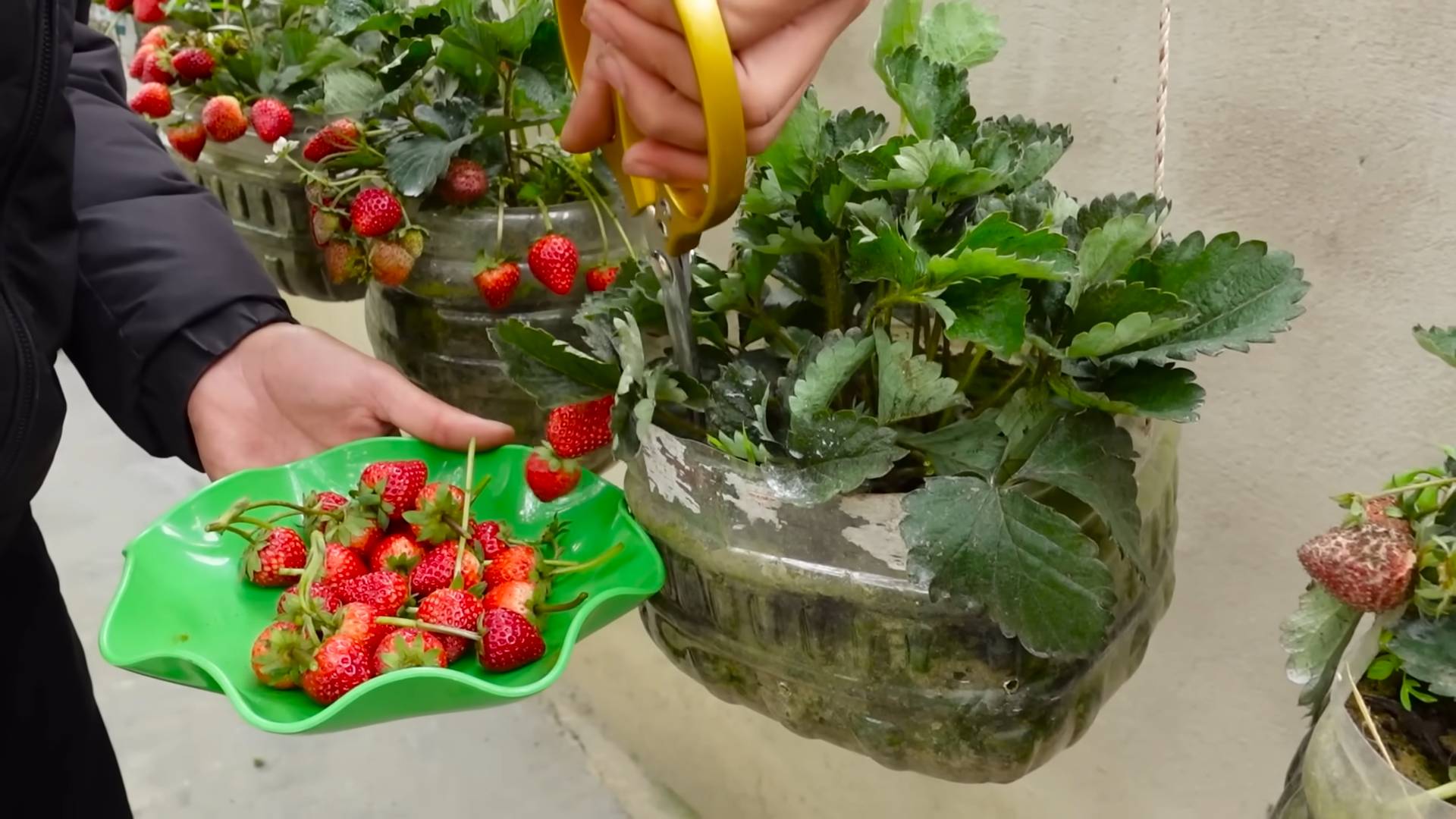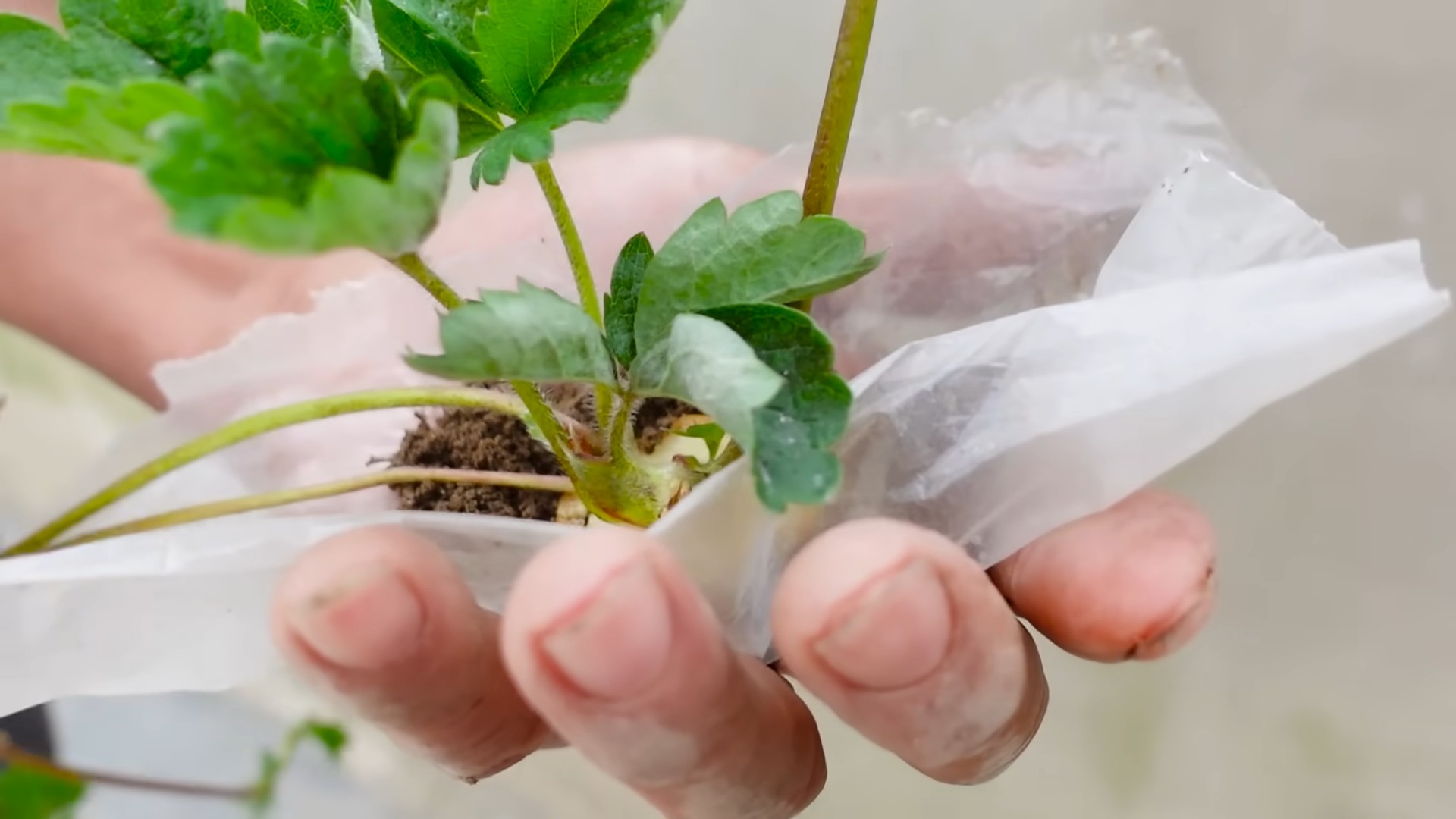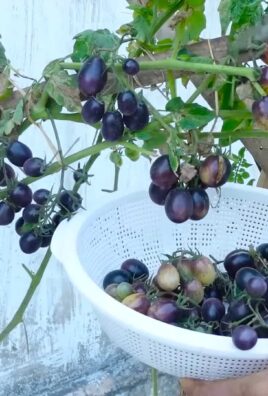Strawberry Gardening Hacks: Who doesn’t love the sweet, juicy burst of a homegrown strawberry? I know I do! But let’s be honest, getting those perfect berries can sometimes feel like a battle against pests, diseases, and unpredictable weather. Are you tired of store-bought strawberries that lack that intense, sun-ripened flavor? Or maybe you’re dreaming of a bountiful harvest but feel overwhelmed by the challenges of strawberry cultivation?
For centuries, strawberries have been cherished not only for their delicious taste but also for their vibrant color and symbolism. From ancient Roman gardens to medieval tapestries, strawberries have represented love, purity, and prosperity. Today, the desire to cultivate our own food, connect with nature, and enjoy the freshest ingredients is stronger than ever. That’s where these clever strawberry gardening hacks come in!
This article is your ultimate guide to unlocking the secrets of successful strawberry gardening, even if you’re a complete beginner. I’m going to share simple, effective DIY tricks and techniques that will help you maximize your yield, protect your plants, and enjoy a continuous supply of delectable strawberries all season long. Forget complicated gardening jargon and expensive equipment – we’re focusing on practical, budget-friendly solutions that anyone can implement. Get ready to transform your garden into a strawberry paradise!

Strawberry Gardening Hacks: From Seed to Sweetness!
Okay, strawberry lovers, gather ’round! I’m about to share some of my favorite DIY hacks for growing the juiciest, most delicious strawberries you’ve ever tasted. Whether you’re a seasoned gardener or just starting out, these tips will help you maximize your strawberry yield and minimize the headaches. Let’s get our hands dirty!
Choosing the Right Strawberry Variety
Before we even think about planting, it’s crucial to pick the right strawberry variety for your climate and preferences. There are three main types:
* June-Bearing: These produce one large crop of strawberries, usually in late spring or early summer. They’re great if you want a big batch for jam-making or freezing.
* Everbearing: These produce two or three smaller crops throughout the growing season. Perfect for a continuous supply of fresh berries.
* Day-Neutral: These produce strawberries continuously throughout the growing season, regardless of day length. They’re a good choice for warmer climates.
Do some research to find out which varieties thrive in your area. Local nurseries are a fantastic resource for this! I personally love ‘Seascape’ (day-neutral) and ‘Chandler’ (June-bearing) for their flavor and productivity.
Hack #1: Upcycled Gutter Strawberry Garden
This is one of my absolute favorite hacks because it’s space-saving, budget-friendly, and looks fantastic! We’re going to turn old gutters into a vertical strawberry garden.
Materials You’ll Need:
* Gutters (as many as you want, cleaned and in good condition)
* End caps for the gutters
* Drill with drill bits
* Measuring tape
* Screws or bolts
* Chains or strong rope for hanging
* Potting mix (specifically for strawberries or vegetables)
* Strawberry plants (bare-root or potted)
* Landscape fabric (optional, for lining the gutters)
Step-by-Step Instructions:
1. Prepare the Gutters: First, measure and cut the gutters to the desired length. I usually go for lengths between 4 and 6 feet for easy handling. Attach the end caps securely to each end of the gutters. You can use gutter sealant for extra security.
2. Drill Drainage Holes: This is super important! Drill drainage holes along the bottom of the gutters, spaced about 6-8 inches apart. This will prevent waterlogging and root rot.
3. Line the Gutters (Optional): If you want to extend the life of your gutters and prevent soil from escaping, line them with landscape fabric. Cut the fabric to fit the inside of the gutters, leaving a little extra to fold over the top edges.
4. Attach Hanging Hardware: Now, we need to attach the chains or rope for hanging. Decide how you want to hang your gutters (vertically stacked or side-by-side). Drill holes near the top edges of the gutters, making sure they’re strong enough to support the weight of the soil and plants. Attach the chains or rope securely. I like to use S-hooks for easy adjustments.
5. Fill with Potting Mix: Fill the gutters with your strawberry-specific potting mix. Leave about an inch or two of space at the top.
6. Plant Your Strawberries: Gently remove the strawberry plants from their containers (if using potted plants) and loosen the roots slightly. Plant them in the gutters, spacing them about 8-10 inches apart. If you’re using bare-root plants, soak them in water for about 30 minutes before planting. Make sure the crown of the plant (where the roots meet the stem) is level with the soil surface.
7. Hang Your Gutter Garden: Find a sunny spot (strawberries need at least 6 hours of sunlight per day) and hang your gutter garden. Make sure it’s securely attached to a sturdy structure.
8. Water Thoroughly: Water the newly planted strawberries thoroughly until water drains out of the drainage holes.
Hack #2: Strawberry Tower from a Pallet
Another fantastic space-saving option is a strawberry tower made from a recycled pallet. This is a bit more involved than the gutter garden, but the results are stunning!
Materials You’ll Need:
* A wooden pallet (heat-treated and in good condition – look for the “HT” stamp)
* Landscape fabric
* Staple gun
* Staples
* Potting mix (specifically for strawberries or vegetables)
* Strawberry plants (bare-root or potted)
* Gloves
* Safety glasses
Step-by-Step Instructions:
1. Prepare the Pallet: Inspect the pallet carefully for any loose nails, splinters, or damage. Remove any hazards and sand down any rough edges.
2. Line the Pallet: This is where the landscape fabric comes in. We’re going to create pockets within the pallet to hold the soil and plants. Start by lining the back and sides of the pallet with landscape fabric. Use the staple gun to secure the fabric to the wood. Make sure the fabric is taut and covers all the openings.
3. Create Planting Pockets: Now, create individual planting pockets by stapling landscape fabric to the inside of each opening in the pallet. Think of it like creating little pouches. Make sure the pockets are deep enough to hold a good amount of soil.
4. Fill with Potting Mix: Carefully fill each planting pocket with your strawberry-specific potting mix. Pack the soil in firmly but not too tightly.
5. Plant Your Strawberries: Gently remove the strawberry plants from their containers (if using potted plants) and loosen the roots slightly. Plant one strawberry plant in each planting pocket. If you’re using bare-root plants, soak them in water for about 30 minutes before planting. Make sure the crown of the plant is level with the soil surface. You can also plant strawberries in the top of the pallet.
6. Water Thoroughly: Water the newly planted strawberries thoroughly until water drains out of the bottom of the pallet.
7. Find a Sunny Spot: Place your strawberry tower in a sunny location that receives at least 6 hours of sunlight per day.
Hack #3: Coffee Filter Drainage for Pots
This is a simple but effective hack to prevent soil from washing out of your pots and to improve drainage.
Materials You’ll Need:
* Coffee filters (the cheap, unbleached kind)
* Potted strawberry plants
* Potting mix
Step-by-Step Instructions:
1. Prepare the Pot: Before you add any soil to your pot, place a coffee filter over the drainage hole at the bottom.
2. Add Potting Mix: Fill the pot with your strawberry-specific potting mix.
3. Plant Your Strawberry: Gently remove the strawberry plant from its container and loosen the roots slightly. Plant it in the pot, making sure the crown of the plant is level with the soil surface.
4. Water Thoroughly: Water the newly planted strawberry thoroughly. The coffee filter will prevent the soil from washing out while still allowing excess water to drain.
Hack #4: Epsom Salt for Sweetness
This is an old gardener’s trick that I swear by! Epsom salt (magnesium sulfate) can help boost strawberry production and sweetness.
Materials You’ll Need:
* Epsom salt
* Watering can
Step-by-Step Instructions:
1. Mix the Solution: Dissolve 1 tablespoon of Epsom salt in 1 gallon of water.
2. Water Your Strawberries: Use the Epsom salt solution to water your strawberry plants every 2-3 weeks.
Why it Works: Magnesium is essential for chlorophyll production, which is vital for photosynthesis. Photosynthesis is how plants convert sunlight into energy, which in turn helps them produce sweeter and more abundant fruit.
Hack #5: Companion Planting for Pest Control
Companion planting is the practice of planting different plants together to benefit each other. Here are some great companion plants for strawberries:
* Garlic and Onions: These repel pests like aphids and spider mites.
* Marigolds: These also repel pests and attract beneficial insects.
* Borage: This attracts pollinators and deters strawberry pests.
* Thyme: This repels cabbage moths and other pests.
Simply plant these companion plants around your strawberry plants to create a natural pest control system.
Hack #6: Strawberry Runners – Propagate for Free!
Strawberries naturally produce runners, which are long stems that grow horizontally and develop new plantlets at the nodes. You can use these runners to propagate new strawberry plants for free!
Materials You’ll Need:
* Strawberry plants with runners
* Small pots filled with potting mix
* Paper clips or landscape staples
Step-by-Step Instructions:
1. Identify Runners: Look for runners growing from your strawberry

Conclusion
So, there you have it! These strawberry gardening hacks are more than just clever tricks; they’re a pathway to a bountiful harvest of sweet, juicy strawberries right in your own backyard (or balcony!). We’ve explored simple yet effective methods, from using coffee filters to prevent soil erosion and deter pests, to crafting DIY strawberry planters from recycled materials. Each hack is designed to be accessible, affordable, and, most importantly, to significantly improve your strawberry growing experience.
Why is this a must-try? Because growing your own strawberries shouldn’t be a daunting task. These hacks demystify the process, making it easier for even the most novice gardener to achieve success. Imagine the satisfaction of plucking ripe, sun-warmed strawberries from your own plants, knowing you nurtured them from tiny seedlings to delicious fruits. Think of the money you’ll save by reducing your reliance on store-bought berries, often laden with pesticides and lacking the intense flavor of homegrown varieties. And consider the environmental benefits of reducing your carbon footprint by growing locally.
But the beauty of these strawberry gardening hacks lies in their adaptability. Feel free to experiment and tailor them to your specific needs and preferences. For instance, instead of coffee filters, you could use natural burlap squares as a weed barrier. If you don’t have access to eggshells, try using diatomaceous earth as a natural pest control method. And if you’re feeling particularly creative, consider building a vertical strawberry tower using PVC pipes or repurposed pallets. The possibilities are endless!
Don’t be afraid to get your hands dirty and embrace the joy of strawberry gardening. We’ve provided you with the tools and knowledge; now it’s time to put them into action. We are confident that these strawberry gardening hacks will transform your gardening efforts and yield a delicious reward.
We wholeheartedly encourage you to try these DIY tricks and share your experiences with us. Did a particular hack work wonders for you? Did you discover a new variation that we haven’t mentioned? We’re eager to hear your stories, see your photos, and learn from your successes (and even your failures!). Share your journey on social media using #StrawberryGardeningHacks and tag us so we can celebrate your achievements. Let’s build a community of strawberry enthusiasts, sharing tips and tricks to help each other grow the best berries possible.
Ultimately, these strawberry gardening hacks are about more than just growing strawberries; they’re about connecting with nature, fostering a sense of accomplishment, and enjoying the simple pleasures of life. So, grab your gardening gloves, gather your supplies, and get ready to embark on a delicious adventure. Happy gardening!
Frequently Asked Questions (FAQ)
Q: What are the best strawberry varieties to grow using these hacks?
A: The best strawberry variety depends on your climate and personal preference. However, some popular and reliable choices include:
* **Everbearing varieties:** These produce fruit throughout the growing season, offering a continuous harvest. Examples include Albion, Seascape, and Ozark Beauty.
* **June-bearing varieties:** These produce a large crop of strawberries in a short period, typically in June. Examples include Chandler, Honeoye, and Earliglow.
* **Day-neutral varieties:** These are less sensitive to day length and produce fruit throughout the growing season, similar to everbearing varieties. Examples include Tristar and Tribute.
Consider your local climate and growing conditions when selecting a variety. Your local nursery can provide recommendations based on your specific area.
Q: How often should I water my strawberry plants?
A: Strawberry plants need consistent moisture, especially during fruiting. Water deeply whenever the top inch of soil feels dry to the touch. Avoid overwatering, as this can lead to root rot. A good rule of thumb is to water 1-2 times per week, depending on the weather and soil drainage. Using a soaker hose or drip irrigation can help deliver water directly to the roots, minimizing water waste and reducing the risk of fungal diseases.
Q: What kind of fertilizer should I use for my strawberry plants?
A: Strawberries benefit from regular fertilization. Use a balanced fertilizer (e.g., 10-10-10) in the spring before the plants start to bloom. You can also use a fertilizer specifically formulated for berries. Avoid over-fertilizing, as this can lead to excessive foliage growth at the expense of fruit production. Organic options like compost tea or fish emulsion are also excellent choices.
Q: How do I protect my strawberries from pests and diseases?
A: Several pests and diseases can affect strawberry plants. Here are some tips for prevention and control:
* **Slugs and snails:** Use beer traps or diatomaceous earth to deter these pests.
* **Birds:** Cover your plants with netting to prevent birds from eating the berries.
* **Spider mites:** Spray plants with insecticidal soap or neem oil.
* **Gray mold (Botrytis):** Ensure good air circulation around the plants and remove any infected fruit or foliage.
* **Root rot:** Avoid overwatering and ensure good drainage.
Regularly inspect your plants for signs of pests or diseases and take action promptly.
Q: Can I grow strawberries in containers?
A: Yes, strawberries thrive in containers! Choose a container that is at least 12 inches deep and wide. Use a well-draining potting mix and ensure the container has drainage holes. Container-grown strawberries may need more frequent watering and fertilization than those grown in the ground. Consider using a self-watering container to simplify watering.
Q: How do I overwinter my strawberry plants?
A: In colder climates, strawberry plants need protection during the winter. After the first frost, mulch the plants with straw or pine needles to insulate the roots. In very cold areas, you may need to cover the plants with a row cover or move them to a sheltered location. Remove the mulch in the spring when new growth begins.
Q: How do I propagate strawberry plants?
A: Strawberries can be easily propagated from runners, which are stems that grow horizontally from the mother plant. These runners will develop roots and form new plantlets. Once the plantlets have established roots, you can cut them from the mother plant and transplant them to a new location. This is a great way to expand your strawberry patch without buying new plants.
Q: What is the best time to plant strawberries?
A: The best time to plant strawberries depends on your climate. In warmer climates, you can plant them in the fall or early spring. In colder climates, it’s best to plant them in the spring after the last frost. This gives the plants time to establish themselves before the hot summer months.
Q: How long does it take for strawberry plants to produce fruit?
A: It typically takes about a year for strawberry plants to produce a significant crop of fruit. However, some everbearing varieties may produce a small crop in their first year. Be patient and provide your plants with proper care, and you’ll be rewarded with a bountiful harvest in the following years.
Q: Can I use these hacks for other types of berries?
A: While these hacks are specifically tailored for strawberries, some of them can be adapted for other types of berries as well. For example, using coffee filters as a weed barrier can be beneficial for blueberries or raspberries. Similarly, creating DIY planters from recycled materials can be used for any type of berry plant. However, always research the specific needs of each type of berry to ensure you’re providing them with the optimal growing conditions.




Leave a Comment